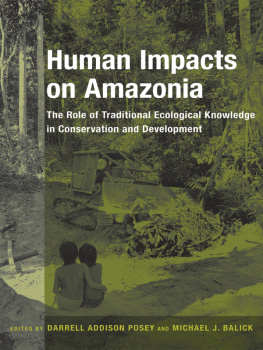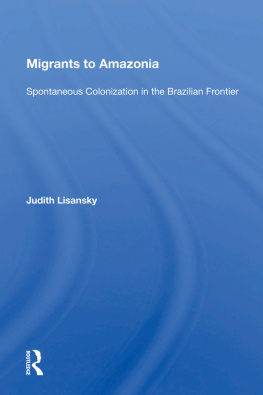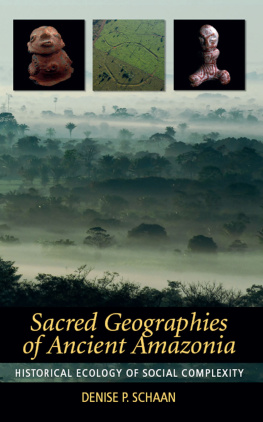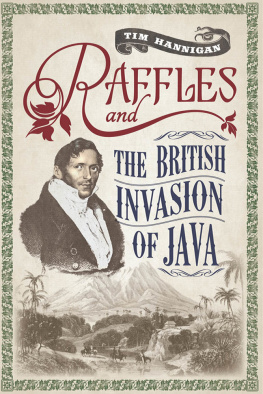COPYRIGHT 2002 BY PRINCETON UNIVERSITY PRESS
Published by Princeton University Press, 41 William Street, Princeton, New Jersey 08540
In the United Kingdom: Princeton University Press, 3 Market Place, Woodstock, Oxfordshire OX20 1SY
All Rights Reserved
Library of Congress Cataloging-in-Publicaton Data
Raffles, Hugh, DATE
In Amazonia : a natural history / Hugh Raffles.
p. cm.
Includes bibliographical references and index.
ISBN 0-691-04884-3 (alk. paper) ISBN 0-691-04885-1 (pbk. : alk. paper)
1. EthnologyBrazilIgarap Guariba. 2. EthnologyAmazon River Valley. 3. Indigenous peoplesEcologyBrazilIgarap Guariba. 4. Indigenous peoplesEcologyAmazon River Region. 5. Estuarine ecologyBrazilIgarap Guariba. 6. Estuarine ecologyAmazon River Region. 7. Natural historyBrazilIgarap Guariba. 8. Natural historyAmazon River Region. 9. Igarap Guariba (Brazil)History. 10. Amazon River RegionHistory. 11. Igarap Guariba (Brazil)Social life and customs. 12. Amazon River RegionSocial life and customs. I. Title.
GN564.B6 R34 2002
306.09811dc21 2002016909
British Library Cataloging-in-Publication Data is available
This book has been composed in Sabon.
Printed on acid-free paper.
www.pupress.princeton.edu
Printed in the United States of America
10 9 8 7 6 5 4 3 2 1
ACKNOWLEDGMENTS
Many people have read and commented on either single chapters or larger portions of a manuscript that has been in progress for several years; others have made more informal but no less valued contributions. My appreciation runs deep to allincluding those whose names have somehow escaped this list: Arun Agrawal, Noriko Aso, Iain Boal, Bruce Braun, Graham Burnett, Jim Clifford, Steve Connell, Bill Denevan, Amity Doolittle, Kate Dudley, Carla Freccero, Jody Greene, Carol Greenhouse, Jimmy Grogan, Donna Haraway, Gill Hart, Julie Harvey, Emily Harwell, Amelie Hastie, Cori Hayden, Gail Hershatter, David Hoy, Jake Kosek, Jean Lave, Celia Lowe, Joe McCann, Doreen Massey, Bill Maurer, Ben Orlove, Miguel Pinedo-Vsquez, Anna Roosevelt, Vasant Saberwal, Suzana Sawyer, Candace Slater, Janet Sturgeon, Neferti Tadiar, Liana Vardi, Michael Watts, Antoinette WinklerPrins, Karen Tei Yamashita, and Dan Zarin. In addition, Don Brenneis, Susan Harding, Susanna Hecht, Dan Linger, Christine Padoch, Nancy Peluso, Michael Reynolds, Jim Scott, K. Sivaramakrishnan, Kristiina Vogt, Eric Worby, Heinzpeter Znoj, and an anonymous reviewer from the Press have made major contributions by reading and responding to one or another version of the entire work. In this regard, I owe particular thanks to David Cleary, who twice provided exceptionally detailed, insightful, and generous readings that considerably advanced the project. I am also more than normally indebted to Don Moore, whose sustained commentary has pulled both me and this book further into Pacific Time than would otherwise have been possible. The book has benefited greatly from the attention of two outstanding copy editorsMaria E. DenBoer and Annie Moser Grayand from the production skills of Brigitte Pelner and Sarah Green. My thanks also to Lys Ann Shore for preparing the index. Mary Murrell has been everything I hoped for in an editor and more: smart, sensitive, imaginativeand an inimitable lunch companion!
Individual chapters have been presented at seminars and conferences at Irvine, Santa Cruz, Philadelphia, Washington, D.C., the University of Delhi, the University of London, and Yale, and I thank audiences and commentators at these events, particularly Amita Baviskar, Teresa Caldeira, Fred Damon, Rebecca Hardin, Gsli Palsson, and Adriana Petryna. In London, I remain grateful to James Dunkerley, Stephen Nugent, and the late Michael Eden for providing a home at the Institute of Latin American Studies, enabling my return to academia and departure for Brazil.
In the United States, I have had the great fortune to work in remarkable institutional settings on both coasts. At Yale, Jim Scott, Kay Mansfield, and the Program in Agrarian Studies welcomed me to what became a formative location. As for Santa Cruz: this book would have been very different and, I am certain, far poorer, had it been written anywhere else. I have learned from all my colleagues, and working at close quarters in particular with Don Brenneis, Jackie Brown, Nancy Chen, Susan Harding, Dan Linger, Ravi Rajan, Lisa Rofel, and Anna Tsing has been equal parts humbling and inspiring.
In Brazil, I am indebted to Jaime Rabelo and Marcirene Machado, Fernando Rabelo and Lcia, Moacir Jos Santana, Mary Helena and Fernando Allegretti, Hlio Pennafort, Waldiclei Pereira Ramos, Waldir Pereira, the staff at the SEPLAN library, the Museu Histrico do Amap, the public library in Macap, and the Archivo Pblico in Belm, to Trish Shanley, Clia Maracaj, Toby McGrath, Harry Knowles, and to Dora, Lene, and Walmir, who always found room for my rede. I am also grateful to Joe McCann for the memorable visit to the Arapiuns basin that is recorded in .
The research on which this book is based was funded by the Joint Council of Latin American and Caribbean Studies of the Social Science Research Council and the American Council of Learned Societies with funds provided by the Ford Foundation; the National Science Foundation; the Program in Agrarian Studies at Yale University; the Yale Center for International and Area Studies; the Yale Tropical Resources Institute; and by faculty research funds granted by the University of California, Santa Cruz. I was able to complete the writing thanks to the award of a University of California Presidents Research Fellowship in the Humanities and an S.V. Ciriacy-Wantrup Fellowship in Natural Resource Studies at the University of California, Berkeley. I am grateful to Michael Watts for acting as my faculty mentor at Berkeley and to all the above institutions for their generous support.
In addition to the people who figure in its pages, I have written this book for my family in Britain and Ireland, especially for my parents. I dedicate it to Sharon Simpson, lifelong best friend, partner-in-crime. So many years sharing our dreams, anxieties, and passions. Always talking, always thinking, never stopping! So many distances traveled. And always together, even when apart. In every respect, this book is the outcome of our two lives entwined.
IN AMAZONIA









